#pascal baudar
Explore tagged Tumblr posts
Text

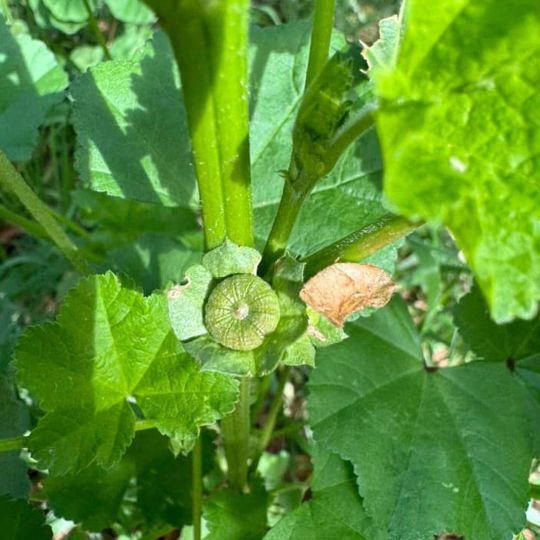
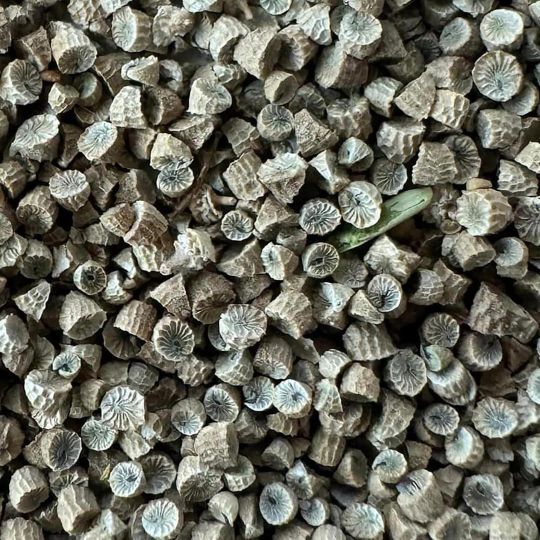
Pascal Baudar
Interesting looking seeds of the week: Common Mallow - Malva neglecta.
Malva neglecta can be found in several continents, it's commonly known as common mallow or cheese weed. Its leaves and flowers can be eaten raw or cooked. When cooked, they can be used similarly to spinach, added to soups, stews, or sautéed as a side dish. The flowers of Malva neglecta can also be added to salads for a colorful touch or used as an edible garnish.
In addition to its culinary uses, Malva neglecta has been used in traditional medicine for its soothing and anti-inflammatory properties, particularly for skin and digestive system ailments.
The seed pods of Malva neglecta, sometimes referred to as "cheeses," due to their shape resembling a small wheel of cheese, can be eaten raw or cooked. They have a mild, pleasant flavor and can be added to salads or used as a snack. In some regions, they are pickled or used as a caper substitute. But, I decided to go a little further and break the seed pods once dried to investigate possible culinary uses for the seeds.
They're super interesting looking, like little barrels with ridges, I didn't collect that many last year but I've enough to start a couple of experiments. Of course, I'm in the progress of sprouting some but I have the feeling that one of the best use will be to grind the dried seeds and make an interesting flour.
27 notes
·
View notes
Text
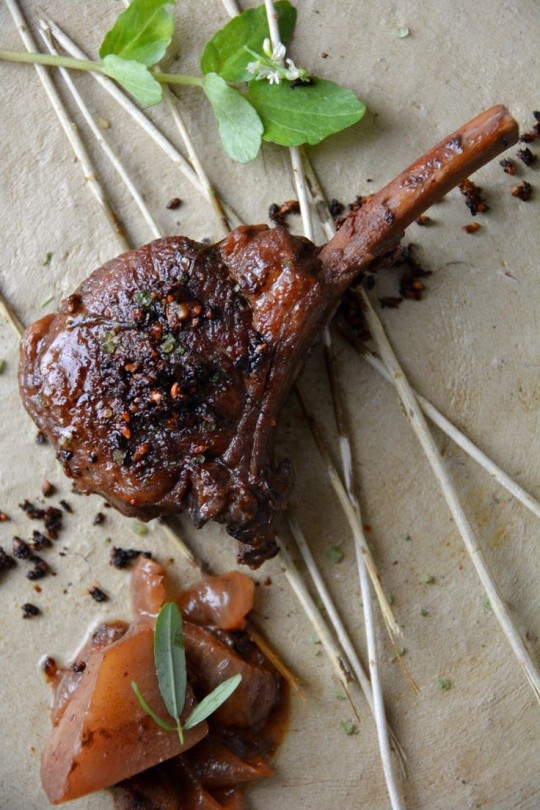
True flavors of Southern California
Lamb chops cooked in homemade Manzanita cider with California Juniper berries, sagebrush, bay leaves, black sage, clover salt, potatoes and onions. Side dish made of wild watercress and roasted buckwheat flowers.
#pascal baudar#recipes#foraged recipes#summer recipes#lamb chops#manzanita berries#juniper berries#sage
68 notes
·
View notes
Text
Edible Wildflowers: A Forager's Guide for Uncertain Times
🌺🪷🌼🌸🥀💐🌹🌷

In a world where economic stability can sometimes feel uncertain, it's essential to explore alternative sources of sustenance. Wildflowers, often overlooked, offer a surprising and potentially life-saving solution. In this blog post, we'll delve into a comprehensive guide to edible wildflowers that can be found in all 50 states of the USA. Additionally, we've compiled a list of engaging books on the subject for our Gen Z readers who are eager to learn more.

**Edible Wildflowers Across America:**
Before we dive into the list, it's crucial to practice responsible foraging. Make sure you:
1. **Identify Properly:** Be 100% certain of a flower's identity before consuming it. Field guides and apps can be helpful for this.
2. **Avoid Polluted Areas:** Only forage in clean, uncontaminated areas, far from roadsides and industrial areas.
3. **Sustainability:** Harvest in moderation, so you don't harm the local ecosystem.
**Edible Wildflowers List:**
1. **Dandelion (Taraxacum officinale):** Found throughout the United States, dandelions offer edible leaves, flowers, and roots. They can be used in salads, teas, or as a root coffee substitute.
2. **Violet (Viola spp.):** These lovely purple flowers are not only edible but also high in vitamin C. They can be used in salads or candied for desserts.
3. **Clover (Trifolium spp.):** The blossoms of clover are sweet and can be nibbled directly or used in salads and teas.
4. **Nasturtium (Tropaeolum majus):** Known for their peppery flavor, nasturtium flowers are excellent additions to salads and sandwiches.
5. **Daylily (Hemerocallis spp.):** These striking flowers have edible petals and can be used in stir-fries or salads.
6. **Chicory (Cichorium intybus):** The petals of chicory flowers can add a slightly bitter flavor to salads or used as a garnish.
7. **Elderflower (Sambucus spp.):** Elderflowers make delightful fritters and are used to make elderflower cordial and wine.
8. **Sunflower (Helianthus spp.):** Sunflower petals are edible and can be used in salads or as a garnish.

**Recommended Reading:**
1. **"The Forager's Harvest" by Samuel Thayer:** This comprehensive guide covers edible wild plants, including wildflowers, and how to responsibly harvest them.
2. **"The Wildcrafting Brewer" by Pascal Baudar:** Explore the art of brewing with wild ingredients, including edible wildflowers, in this creative guide.
3. **"Backyard Foraging" by Ellen Zachos:** Perfect for urban foragers, this book focuses on finding edible plants, including wildflowers, close to home.
4. **"Foraging California" by Christopher Nyerges:** If you're on the West Coast, this guide will help you discover a wide range of edible wildflowers in California.
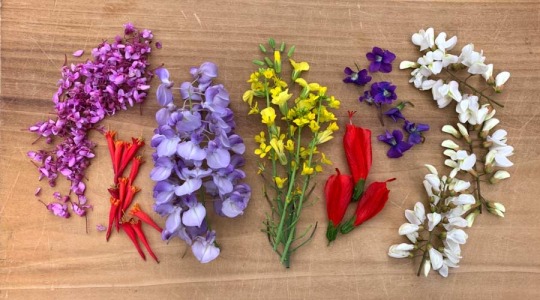
As we navigate uncertain times, learning about edible wildflowers can provide an essential skillset for self-sufficiency. Remember to approach foraging responsibly and sustainably, respecting the natural world. With the right knowledge and respect for nature, you can transform wildflowers into delightful additions to your diet. Happy foraging!
I hope you enjoyed this post. Find me on Youtube and X @diaryofpetals or email me at [email protected]
🍒🪷🌼🌹🌺💐🌸🥀🌷
#flowers#botany#garden#old orchard beach#wildflowers#flores#jardines#texto de amor#mis notas#virales#viralpost#viral video#viral trends#viralpage#colors
2 notes
·
View notes
Quote
Locally the most common food waste may be wild edibles. In Spring, our local hills are completely covered with different types of mustards, mallow, wild radish, chickweed … probably hundred of tons of edibles leaves, roots, seeds and flowers. Some are crops in different countries but here…I estimate that we probably have over 100 “non-native” wild edibles that we either spray with chemicals or uproot then throw away. Meanwhile we have people who can not afford organic food in Los Angeles – heck, some can not even afford food. Food waste may be a trendy term but nobody is looking at the obvious. We are surrounded by it!
Pascal Baudar
#i appreciate that he clarified that it's not about every plant that doesn't get eaten as waste#like obviously the sustainability is important with non-invasives#but plenty gets killed or poisoned to no one's benefit
2 notes
·
View notes
Text
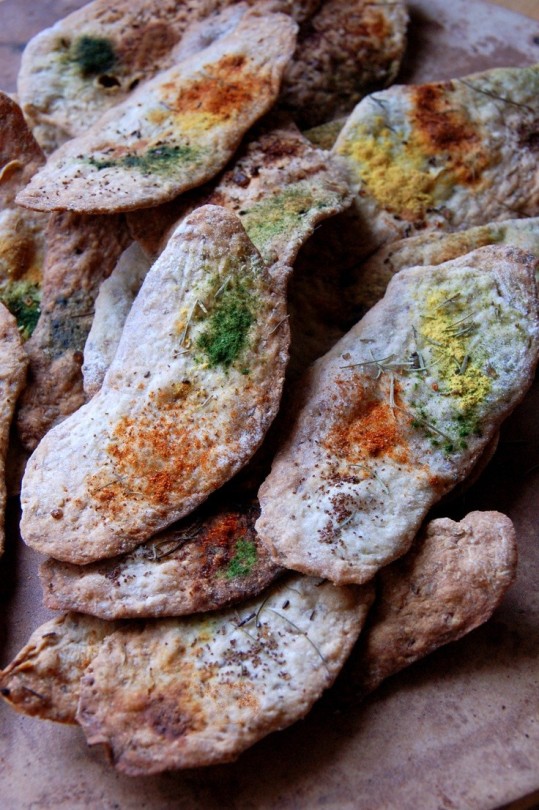
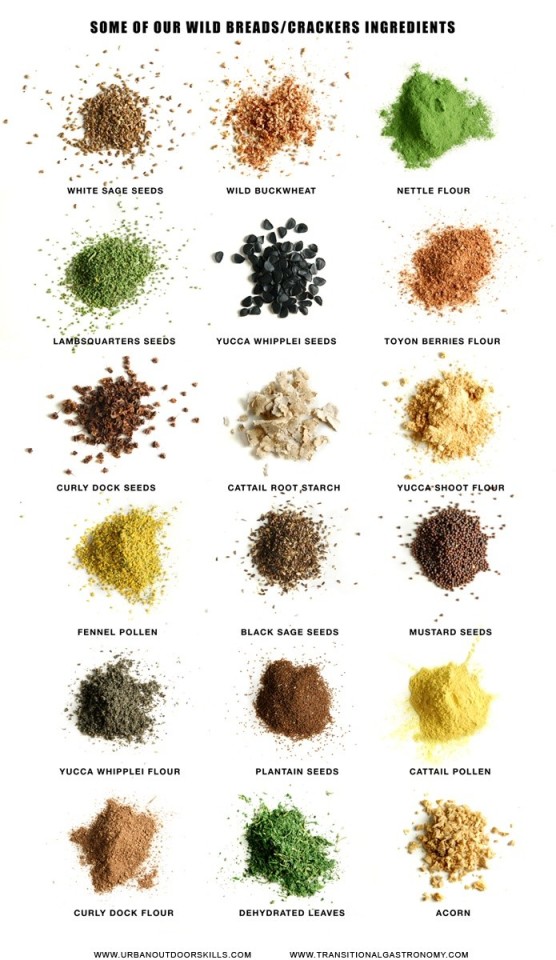
Description from wild food instructor and traditional food preservation technique researcher Pascal Baudar via Pinterest:
Wild flour and seeds crackers. Curly Dock flour, Nettles flour, Californian buckwheat, some regular wheat flour on top, white sage seeds, plantain seeds, lambquarters flour, cattail pollen, and Californian sagebrush. (urbanoutdoorskills.com)
#vegan#snacks#crackers#wild foods#stinging nettles#curly dock#lambsquarters#plantain (Plantago spp.)#buckwheat#sage#mustard seeds#yucca root#cattail#fennel pollen#not a recipe#if you do decide on making any of today's recipes be sure you forage/source sustainably or not at all#Also be 150% sure in your identifications 💕
14 notes
·
View notes
Text
Hagging out: May tea
Before the tea lovers get to me, I admit I don’t drink much “real” tea, as in the green or fermented leaf of camellia sinensis. However, making herbal teas and infusions has been a great way for me to learn and experience the land around me. Before consumption comes a process of learning about a plant: where flavors come from and their correlating actions, growth and optimal harvesting times, the best ways to infuse. Then the marriage of plant and water offers a communion, a direct experience, consumption of the elements and compounds held within plant fibers, an intimate commingling of plant and human chemistry and spirit... But also, making herbal tea blends gets me to actually put to use to the plants I harvest, offers a healthy alternative to flavored beverages and something more exciting than plain water, and has helped create new traditions.

(I haven’t been feeling the best lately and have been drinking lots of tea while waiting to see the doctor... comfrey, melissa, and monarda have been providing a helpful concoction)
One of my most favorite traditions we have started since moving here is the making of Ivan Chai/Koporye tea/fermented fire weed. Every year we take a walk up the road to a patch of fireweed (chamaenerion angustifolium) collect some of its green leaves to roll and ferment into a local black tea replacement (often with monarda for a Vermont version of earl grey). It’s one of the best herbal teas (imo) and overall a really neat process to create. I’m also looking forward to turning my herbal teas into fermented brews for a bubbly addition (alcoholic and not) as I try to work through Pascal Baudar’s The Wildcrafting Brewer. And future projects include creating a good coffee substitute (I’m thinking dandelion, chicory, and chaga). But since it is May and the fireweed isn’t ready for harvest I took a little liberty with this month’s challenge in doing an infusion inspired by spring blooms.
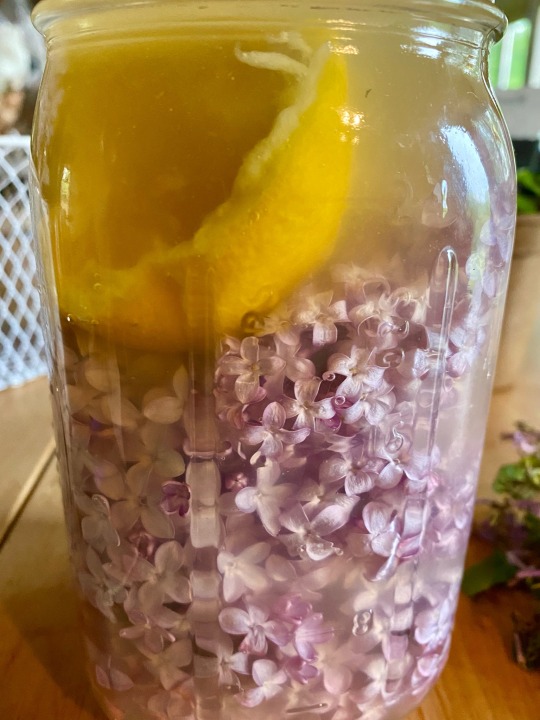
(Lilac, lemon, and honey will hopefully ferment into a nice fizzy drink)
Apple blossom brandy:
By far the best usage of Apple Blossom is in an elixir... tincture them in brandy, letting these abide in the sealed vessel for one week’s time before filtering. Honey may be added in discretion if the blossom possesses insufficient quantity of nectar. This flower-elixir serves as a Magical Key of Communion with the Genius of the Tree and should be taken in small quantity -but a few drops is sufficient- and used in conjunction with the Work of the Veil. In time, and with discernment, this elixir shall serve the magical Work of Manifestation, the Golden Apple of the Gods. - from Viridarium Umbris, Daniel Schulke
We are approaching the fifth anniversary of our move into our home and it has stirred up lots of reflections and reexaminations (perhaps more on that next week...however...)
The apple is a keystone to our lives. Not only is it a major part of the reforested landscape of Vermont but also a supporter of the home providing beauty and bounty. They beckon our attention and keep us attuned to the seasons. We trim their branches during winters decline, revel in their spring blossoms, tend to thinning clusters of fruit for June drop, fend off the rose chaffers in the heat of summer, we watch and wait as plump crisp fruits develop culminating in an overwhelming harvest, bask in the smell of ripe fruit that fills the air in fall, which leads to the processing of delicacies for winter sustenance. This year will include dehydrating apples for tea and incense (now that we have a really nice dehydrator) which will be a nice addition (as we usually make way too much apple sauce aha) But with the homecoming anniversary on the approach I also wanted to create something special to connect with this tutelary spirit of our home.
Offering incense of rose along with some honey, I collected blossoms from three of the apple trees, one which defines our home with its crooked trunk and sprawling branches, one who provides the most flowers, and one who provides the most fruit. The petals covered in an apple cider brandy were left to bathe Friday till Friday under Venusian graces. (I was hoping to get in a second charge of flowers but a wind storm swept them away during the week infusion) Filtered and bottled this elixir will be first put to use in next weeks anniversary blessing. But I can also see this infusion being useful for incense, as well as special addition to libations and spiked beverages.

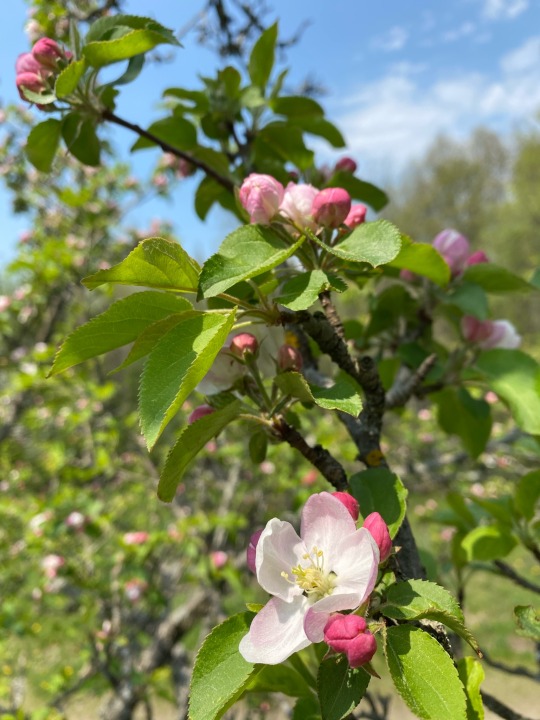


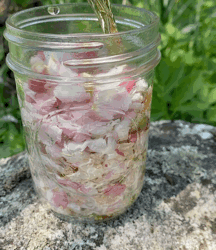

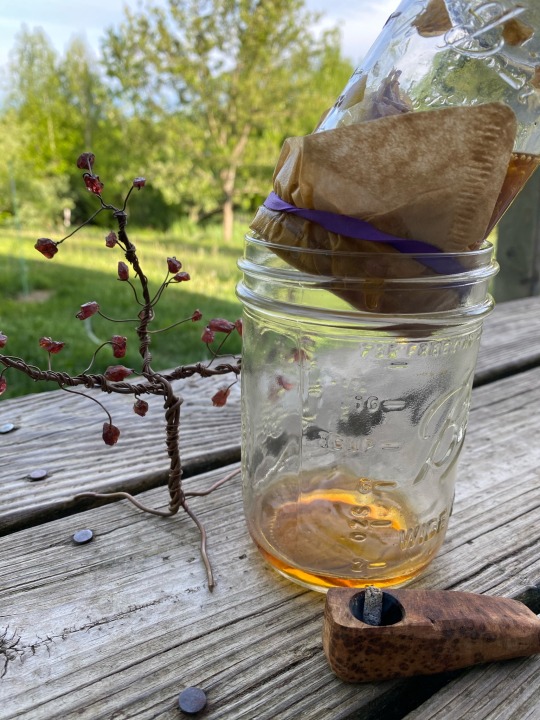
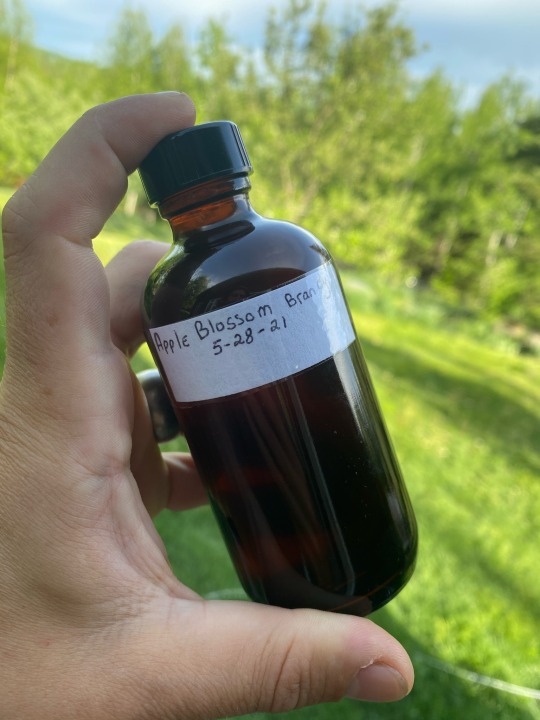
A special thanks to @graveyarddirt for hosting awesome projects and letting the dude hags participate this month ;)
110 notes
·
View notes
Text
Occult Books Tag Game
Tagged by: @lailoken
1) What’s your favorite book of all time?
I stared at several shelves of books trying to figure this out. I think it might actually be Witchcraft for Tomorrow by Doreen Valiente - I return to it a lot.
2) What’s your favorite grimoire?
Ugh...so difficult to choose. Probably Viridarium Umbris because it’s the first actual grimoire I got, but can I say Opuscula Cypriani? I’m legit sleeping next to this book lately.
3) What’s the worst book you’ve ever read?
Apocalyptic Witchcraft. I’m serious. I’d rather read Silver Ravenwolf.
4) What book really didn’t live up to the hype?
Apocalyptic Witchcraft. Oh, did I already use that? Well, it’s both. But also, Treading the Mill - Nigel Something, The Crooked Path - Kelden, Besom, Stang & Sword - Chris Orapello.
5) What book has been on your list forever but you just never got around to reading it?
Triumph of the Moon. I’m halfway through it, it’s just so dull.
6) What’s a book you never see on recommendation lists, but you think should be?
Invoking the Akelarre - Emma Wilby, Scottish Fairy Belief - Lizanne Henderson, Grimoires: A History of Magic Books - Owen Davies, The Tradition of Household Spirits - Claude Lecouteux, Seidways - Jan Fries.
7) Which book has the most useful information out of any book you’ve read?
For me it was A Deed Without a Name. A lot of things clicked into place because of that book.
8) What book would you recommend to beginners?
I don’t have one. There is no magical *one* book that’s going to give you everything you need to know. Just...read it all. Read the scholarly historical books and the shitty witchcraft/pagan books so you can learn discernment. But most of all, put the books down and practice.
9) What book would you recommend to people who’ve been at it a couple of years?
Viridarium or Ars Philtron.
10) What’s a good book about a niche interest of yours?
The Wildcrafting Brewer - Pascal Baudar
I’m going to tag @jbirdthemanwitch and @phytolacca-a @mayweatherscunning @muddyviolets (sorry if you’ve already done this!)
55 notes
·
View notes
Photo

Pascal Baudar's Homemade Flavored Vinegars
33 notes
·
View notes
Note
hey nate do you have any good rangercore blog recommendations?
I know you’re probably asking for tumblr blogs but I’m not entirely sure what you mean by “rangercore” and to be entirely honest I get a lot of my ranger-y-feeling content fix from other sources and websites myself, so I hope this is still vaguely what you’re looking for!
Hunter, Angler, Gardener, Cook is probably the single most ranger site I know of, personally. Hank Shaw is like, foraging/hunting – and then as a result of it, cooking – goals for me. I especially love that he approaches it from an avenue of reasonable accessibility. He has a number of really great books out too, if you’re more curious about his techniques and recipes
Forager Chef is similar! Can you tell I have a certain brand I love here
Also, okay. Listen. Pascal Baudar has a very nice instagram, but his actual blog-ish is an amusing website design trainwreck (and is mostly for his classes) so I’m not linking it. Find his books instead.
Oni is a blog I discovered while trying to poke at some mycology resources, and while it doesn’t have a ton up, I feel like the majority of the entries do definitely have some solid ranger-y vibes
The Wondersmith gets a little mystical for me at times, so I suppose they might be a bit more of a druid blog if you were thinking in D&D terms, but I’ve definitely taken some inspiration from their work for some of my elf worldbuilding and would feel remiss not including them as a result
Does the official Geocaching blog count? I feel like geocaching is as ranger-y as it gets. Which is one reason I love it. If you’re looking for some kind of outdoorsy adventure to get involved with (assuming you haven’t checked it out already), geocaching is one that’s won my heart
Now go forth and make good use of your local nature! I’m definitely getting the urge as of late to go and do so myself
55 notes
·
View notes
Text
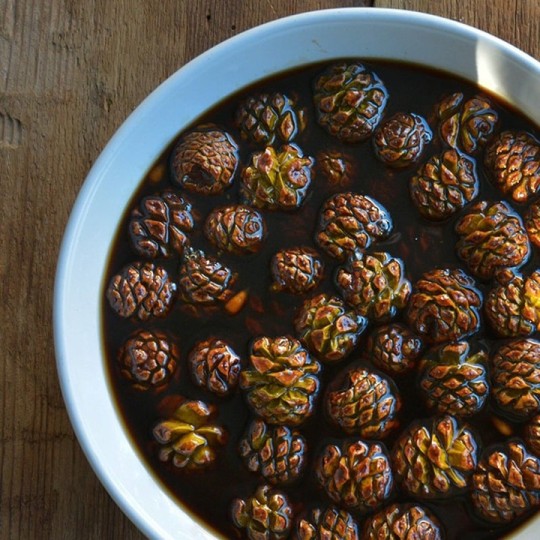
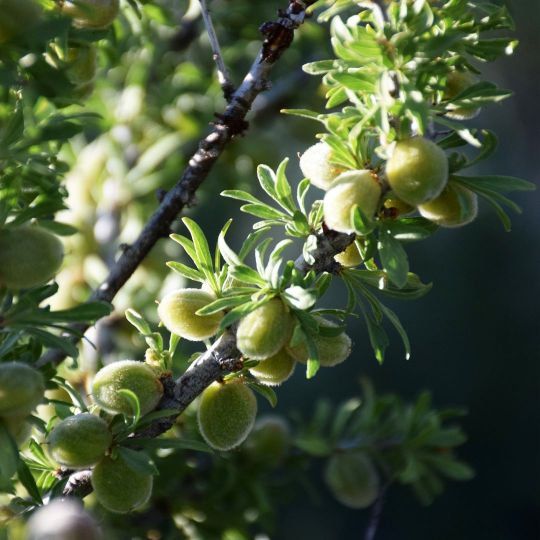
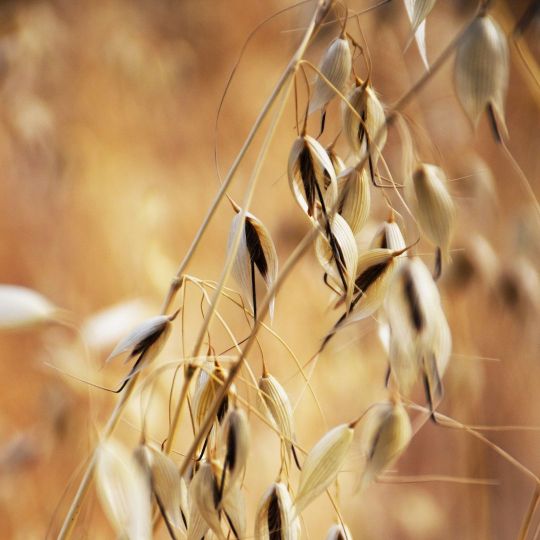

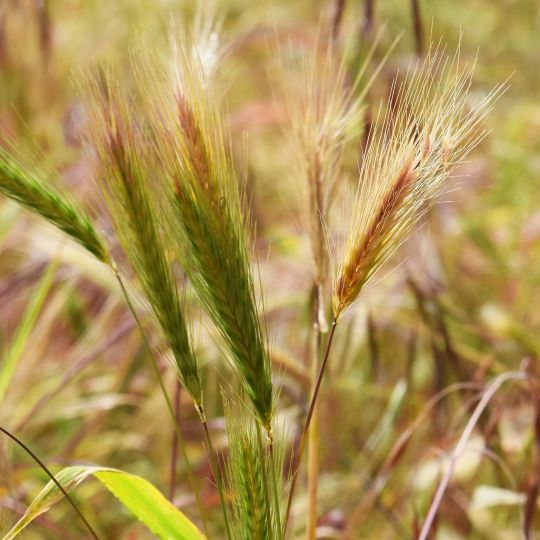
Pascal Baudar
Humble breakfast - local flavors
Pinyon pine syrup, crushed desert almond. Stone ground wild and regular oats, crushed wild barley and great brome (type of foxtail) grains. Apple chunks.
Bowl made with local clay and recycled dead branches of mulefat for chopsticks.
Lots of work behind this simple breakfast bowl but so worth it.
4 notes
·
View notes
Text


Wild Seed Vinaigrette
1 ounce red onion or shallots (chopped) 1/2 jalapeno or similar pepper (chopped) 2 teaspoons pickled wild seeds 1 tablespoon homemade Dijon mustard (black mustard seeds) 1/2 teaspoon garlic powder 1 teaspoon Italian herbs (I use my own blend of wild spices) 3 tablespoons elderberry wine vinegar or red wine vinegar 2 tablespoons water Salt to taste
11 notes
·
View notes
Text
Read PDF The Wildcrafting Brewer PDF -- Pascal Baudar
EPUB & PDF Ebook The Wildcrafting Brewer | EBOOK ONLINE DOWNLOAD
by Pascal Baudar.

Download Link : DOWNLOAD The Wildcrafting Brewer
Read More : READ The Wildcrafting Brewer
Ebook PDF The Wildcrafting Brewer | EBOOK ONLINE DOWNLOAD Hello Book lovers, If you want to download free Ebook, you are in the right place to download Ebook. Ebook The Wildcrafting Brewer EBOOK ONLINE DOWNLOAD in English is available for free here, Click on the download LINK below to download Ebook The Wildcrafting Brewer 2020 PDF Download in English by Pascal Baudar (Author).
Description
Primitive beers, country wines, herbal meads, natural sodas, and moreThe art of brewing doesn’t stop at the usual ingredients: barley, hops, yeast, and water. In fact, the origins of brewing involve a whole galaxy of wild and cultivated plants, fruits, berries, and other natural materials, which were once used to make a whole spectrum of creative, fermented drinks.Now fermentation fans and home brewers can rediscover these “primitive” drinks and their unique flavors in The Wildcrafting Brewer. Wild-plant expert and forager Pascal Baudar’s first book, The New Wildcrafted Cuisine, opened up a whole new world of possibilities for readers wishing to explore and capture the flavors of their local terroir. The Wildcrafting Brewer does the same for fermented drinks. Baudar reveals both the underlying philosophy and the practical techniques for making your own delicious concoctions, from simple wild sodas, to non-grape-based “country wines,” to primitive herbal beers, meads, and traditional
0 notes
Text
PASCAL BAUDAR WILD yeast STARTERs https://m.facebook.com/story.php?story_fbid=10158566149149759&id=800354758
CA NATIVE plants NURSERY PDF CATALOG DL, Tree of Life ADDRESS 33201 CA-74, San Juan Capistrano, CA 92675 https://californianativeplants.com/plants/plantcatalogdownload/
https://joegardener.com/podcast/weed-management/
LOOK for potential pest issues on the leaves and roots https://m.youtube.com/watch?v=OH-cankbHKo & https://joegardener.com/podcast/garden-savvy-shopping-for-healthy-plants & use tulle fabric (bridal veil) https://m.youtube.com/watch?v=fV0rm4YUnP4
youtube
youtube
https://joegardener.com/how-to-make-compost
https://m.youtube.com/watch?v=q86Tvg0Ftc0&list=PLlotznzK3pON-Mn7hd-nFU0ps2eooBVxU&index=3 (ORIGINAL https://m.youtube.com/watch?v=q86Tvg0Ftc0&utm_medium=social&utm_source=meetedgar.com&list=PLlotznzK3pON-Mn7hd-nFU0ps2eooBVxU&index=3 )
youtube
https://youtu.be/4bjK7z-EpZE
youtube
First 2m48s : SWORD pupS/suckerS (NARROWer leaves) BETTER for PROPAgation = BETTER, GENETICally IDENTICAL to MOTHER banana plant + BETTER ROOT system than so-called water pupS (WIDEr leaves), poorER ROOT system. Didn't finish watching yet so don't know if ... water pups GENETICally IDENTICAL?! https://m.youtube.com/watch?v=jXNMfvMgRx8
youtube
https://www.theverge.com/2020/5/6/21249621/google-authenticator-update-transfer-account-between-devices-2fa
the plague: stay inside
everyone: i must bake Bread, immediately
#sourdough#yeast#essential#for#bread#recipe#kitchen tip#kitchen witchcraft#cooking#CA NATIVE plants#CATALOG#DL#security#Google Authenticator#2FA#propagation#Goldfinger#banana#video#COMPOSTing#weed#shopping#pest#pesticide
69K notes
·
View notes
Text
@thedeedwithaname tagged me for a list of 10 books I would like to finish reading this year. Thank you! I actually realized I have way too many books that I’ve started and left unfinished, so these are probably my more pressing ones.
1. Lux Haeresis by Daniel Schulke - I forgot I had this book! I’ve been primarily trying to focus on working my way through the unfinished cultus sabbati books I have just in case The Green Mysteries ever comes out (I’ll probably die first). Haeresis is different from the usual stock because it’s more anecdotal, while still containing practical workings that can be put to use.
2. Pale Hecate’s Team by Katharine Briggs - Briggs has excellent books on historical folklore, especially the fair folk. This book focuses on witchcraft and magic, specifically how it influenced Shakespeare and other writers during the era.
3. Magia Naturalis Et Innaturalis by Johannes Faust (Enodia Press) - Or we can just say all the books by Enodia Press because I have a terrible habit of buying a book just so I don’t miss it before it sells out and then forget to actually read it.
4. Princess, Priestess, Poet by Betty De Shong Meador - The Sumerian Temple Hymns of Enheduanna. I’ve already started reading this book and flipped through it a few times specifically for the Hymns to Inanna.
5. The Wildcrafting Brewer by Pascal Baudar - Not just for getting drunk! This book is awesome and has a ton of recipes in it for creating beverages with wildcrafted ingredients like flavored or infused syrups, natural sodas, as well as beers, wines, meads, etc.
6. Initiation into Hermetics by Franz Bardon - I can’t believe I still haven’t finished reading this book, let alone started working through it.
7. Perichoresis by Anathema Publishing - This is a collection of Anathema’s three Pillars periodicals and I’ve mostly finished it but the articles are rather hit or miss for me and I end up abandoning the book for months when I read something that bores me.
8. The True Grimoire by Jake Stratton-Kent - I’ve been wanting to pick this book up as I’ve gotten really interested in the Grimorium Verum and the Clavicula Salomonis de Secretis and would love some additional insight into these grimoires.
9. Celtic Curses by Bernard Mees - It’s a book on historical curses used in the celtic regions - need I say more?
10. Via Tortuosa by Daniel Schulke - And to round it out, we end with another Daniel Schulke, a new work about the crooked path. I just ordered this and can’t wait to get it!
So those are the 10 I’m hoping to finish reading this year and I guess I’ll tag @therainshallmakeadoor @old-mother-hubbard @fair-is-foul @lamarium-unguenta @mahigxn @tradcrafttyler because they seem like interesting folks and anyone else that wants to do this!
#books#books i haven't finished#because i'm lazy#i blame netflix#witchcraft#personal#reading list#lazy af
24 notes
·
View notes
Text
From the Strategist: Everything You Need to Start Fermenting at Home
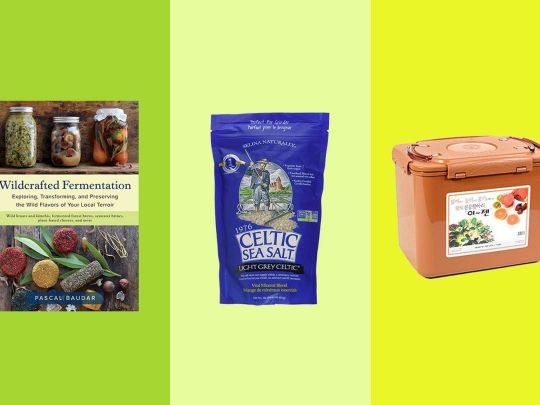
The best books, salts, and tools to kickstart a vegetable preserving hobby, from the Strategist
It’s very likely that your fridge has never been fuller than it is right now. Sure, you’re going to the grocery store less, but you’re buying more when you would on a typical shopping trip. Most produce — vegetables, in particular — has a tendency to go bad if you don’t use it quickly. One very easy way to extend the shelf life (and allow you to go even more time between grocery runs) is with fermentation.
Fermentation involves allowing the naturally occurring bacteria on fruits and vegetables to thrive and produce lactic acid, which helps preserve them. The most common examples of this are sauerkraut and kimchi, but as Michael Perrine, founder of rejuvenation and detox clinic Vitality NYC says, almost any vegetable will do as long as it’s hardy. “Cabbage, carrots, beets, and other roots ferment really well,” he says. “I suggest using them as a base even if adding other veggies.” Perrine is one of seven experts we asked — including chefs, cookbook authors, and a professional sauerkraut-maker — for advice on everything you need to become a modern preservation-minded homesteader. Here’s how to get started fermenting at home.
Salt
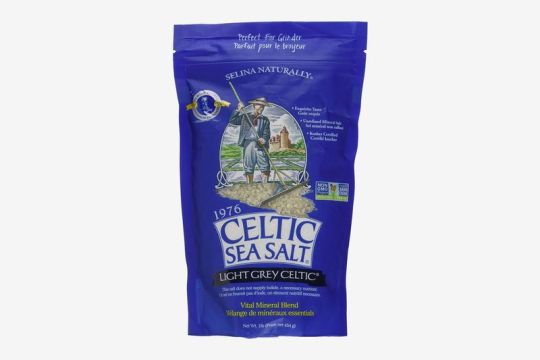
Photo: retailer
Light Grey Celtic Sea Salt
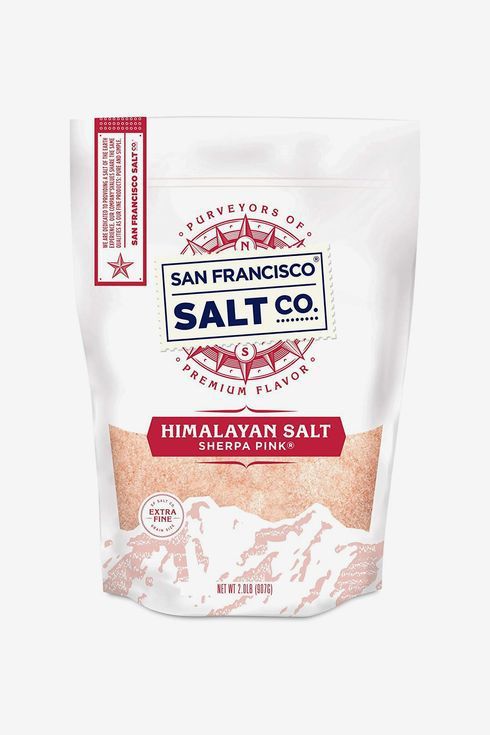
Sherpa Pink Gourmet Himalayan Salt
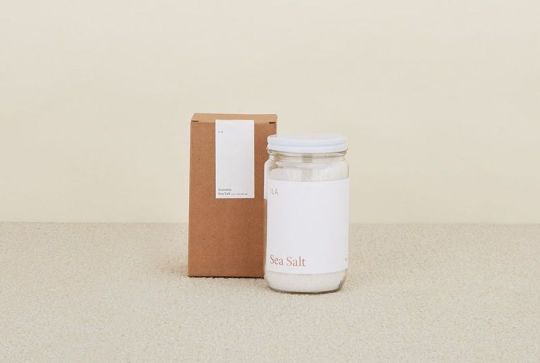
ILA Sonoma Sea Salt
The foundation of lactic fermentation is salt, which, according to Perrine, “creates an environment where lactic-acid bacteria will completely take over the medium destroying all the bacteria, molds, and yeasts.” There’s a bit of a divide on what salts to use, however: Kathryn Lukas, founder of Farmhouse Culture and co-author of The Farmhouse Culture Guide to Fermenting, prefers high-quality, plain sea salt. “I like a higher sodium fluoride salt, like Sonoma sea salt, because it’s really, really high in sodium chloride,” she says. “Some of these other salts, like Celtic sea salt or Himalayan sea salt, can be as low as 90% sodium chloride and the rest are minerals.”
Perrine is in the latter camp, saying that he likes to use Celtic sea salt and Himalayan for not only the mineral flavor they lend but the health benefits of adding those minerals to a ferment. “I find a ratio of two teaspoons of salt per pound of vegetable to be perfect,” he says. Either way, look for the most natural salt you can. “Make sure that there are no additives, no anti-caking agents, no bleach, or anything like that,” says Lukas. “That’ll screw up the fermentation quickly.”
Jars
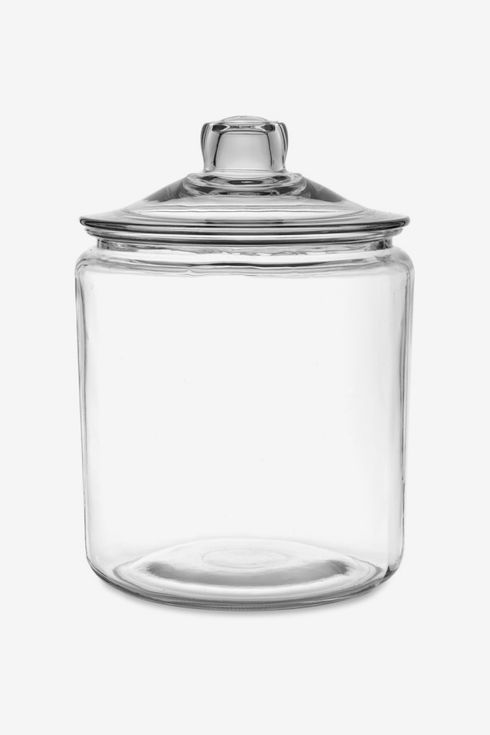
Large Biscotti Jar
Next comes the equipment, which costs little more than a jar of premade kimchi. If you’re not quite sure you want to fully commit, David Zilber, head of fermentation at Noma in Copenhagen, says feel free to purchase a biscotti jar, which you can store in a dark cabinet during the fermentation process. “They’re much simpler to find,” he says, plus “they’re durable, they’re machine-washable, and they look as gorgeous as a fancy ceramic crock.” And if you give up on fermenting, you’ll end up with a very nice looking jar.
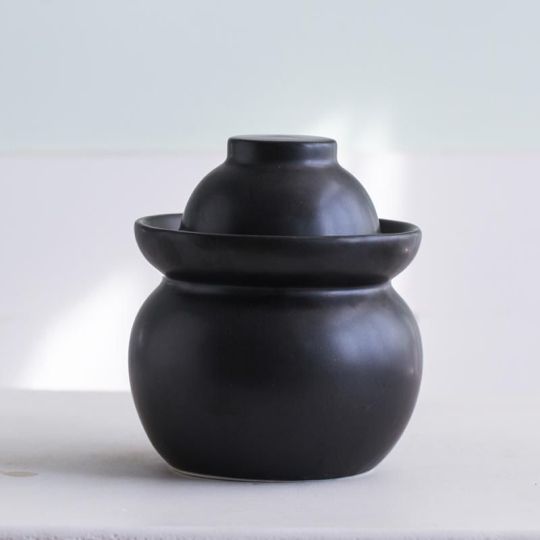
Mini Kimchi Jar
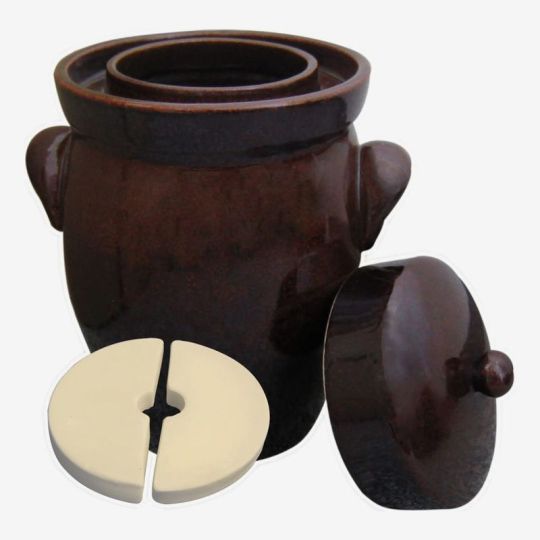
German Made Fermenting Crock Pot
If you want to keep your ferments on your kitchen counter, though, you’ll need a crock that keeps out the sunlight. Amelie Kang, the chef and owner of Sichuan dry-pot restaurant MáLà Project in New York City, is a fan of “jellyfish” pickle jars. “After pickling, you can close the jar by putting the cap bowl upside down and then pour water into the curve, creating the perfect seal.” she says.

E-Jen Premium Kimchi, Sauerkraut Container Earthenware Brown 1.7L
Chefs Dave Park of Jeong in Chicago and Kevin Fink of Austin’s Emmer & Rye, meanwhile, are evangelists of the E-Jen Kimchi container. “It’s one of my favorite containers to ferment in,” Park says. “It’s really useful because it has an insert that essentially creates a vacuum to press down your ferments. It has an inner ring where you can either burp your ferments or keep it airtight. It’s definitely one of the most useful containers I’ve found.”
They’re also perfect for when you want to start fermenting dairy. “These crocks are great for producing cultured butter or yogurts and other items that have a higher probability of rancidity,” says Fink. “The lack of light penetration makes checking them more necessary, but the end product is more stable.”

Complete Mason Jar Fermentation Kit
Or you can just click one link and be done. “I like to refer people to culturesforhealth.com to order one of their kits,” says Perrine of Vitality NYC. “They also have gallons and lids for 16-ounce ball jars because I always say you may as well go big so you can do it less often. Cultures for Health makes it easy enough though to get everything at once.”
Handbooks
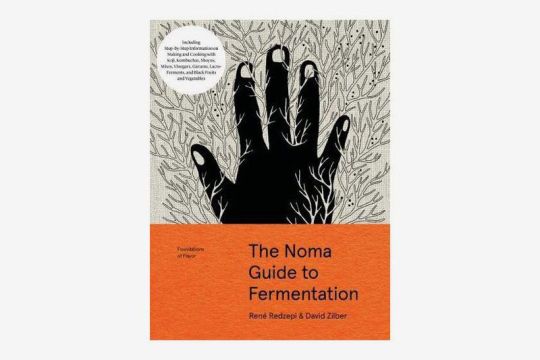
Photo: retailer
The Noma Guide to Fermentation
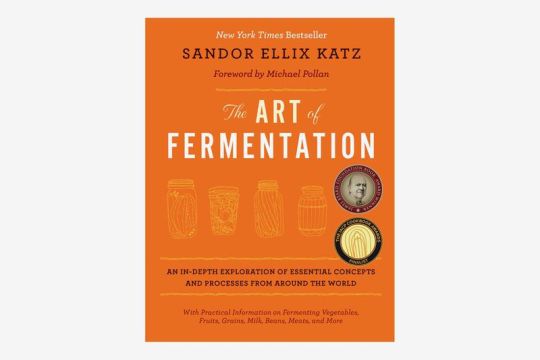
Photo: retailer
The Art of Fermentation
Fermenting can be as simple as salt, cabbage, and a jar you can burp or as complicated as a multi-ingredient kimchi. If you’re not quite sure where to begin, though, there’s plenty of literature out there to get you inspired. Park of Jeong turns to two books.
“I really like these books because of the detailed information they provide,” Park says. “The Art of Fermentation contains a lot of general knowledge of all the different fermented products of the world in a very relaxed manner and helps you understand how you might be able to start making all of your fermented projects. The Noma Guide to Fermentation digs deeper into the science and details of some major ferments, such as shoyu, vinegars, and miso. It is more technical and precise, with things like temperature control, humidity levels, and bacteria.”
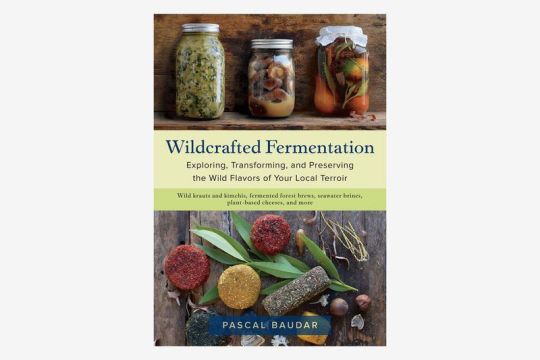
Photo: retailer
Wildcrafted Fermentation: Exploring, Transforming, and Preserving the Wild Flavors of Your Local Terroir
And if you really want to get outdoorsy, Sandor Ellix Katz, the aforementioned author of The Art of Fermentation, heartily endorses Wildcrafted Fermentation by wild-food researcher Pascal Baudar, which was published in March. “Pascal is a culinary visionary, experimenting with what he finds outside his home and in nearby forests and using it for its flavors and as fermentation starters,” Katz says. “He’s taking fundamental fermentation processes and applying them in innovative and exciting ways.”
Tools

Ozeri ZK14-S Pronto Digital Multifunction Kitchen and Food Scale

Canning Funnel

Sur La Table Non-Skid Stainless Steel Mixing Bowls, Set of 3
Once you have all your fermenting equipment, it’s time to get started. Sauerkraut maker Kathryn Lukas says you need just three key tools: A small scale to weigh your vegetables, which determines how much salt you’ll use. (“You can get one for $20,” Lukas says.); a large stainless steel or ceramic bowl; and a canning funnel, which helps prevent overfilling your fermentation vessel. “And then a knife and a cutting board for cutting the vegetables into smaller pieces,” Lukas adds.
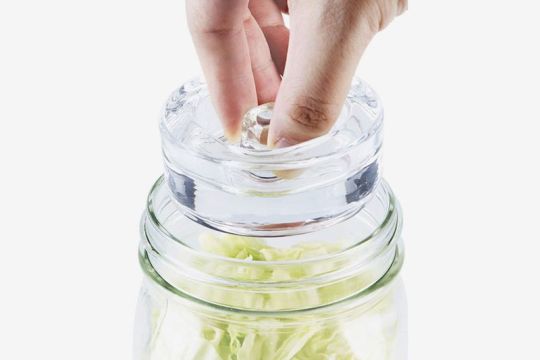
Photo: retailer
4-Pack of Fermentation Glass Weights with Easy Grip Handle for Wide Mouth Mason Jar
If you’re using a jar or other large container, you’ll need to make sure the fermenting produce is kept away from open air, which can carry yeast, mold, and other bacteria that you don’t want in your ferment. The solution: Glass or ceramic weights. “Their purpose is to keep all the food you’re trying to ferment beneath the water line,” Zilber of Noma told the Strategist back in 2018. “If they’re not packed down nicely in the jar, there’ll be lots of air. A good weight that’s heavy enough and fits the jar nicely without getting stuck on the sides is very important.”

6 Pack 0.94 Inch Blue Painters Tape
And then it’s just a matter of waiting. “I find most ferments to be finished in 10 to 14 days,” says Perrine. “The temperature is the determining factor. If it’s very warm, fermentation will happen faster, while cold temperatures slow it down.” Just keep in mind that the longer you let the ferment go, the funkier it will get. “The real fermentation connoisseurs say the best flavor is achieved at cooler temperatures for long periods, as long as 20 to 30 days,” he continues. “This allows different types of bacteria to take over, creating a more pleasing flavor. All that’s to say, label and date your ferments. I always forget when I made it and have to check my Instagram Story archive to figure it out.”
from Eater - All https://ift.tt/2LPqRNH https://ift.tt/3cS8NhN

The best books, salts, and tools to kickstart a vegetable preserving hobby, from the Strategist
It’s very likely that your fridge has never been fuller than it is right now. Sure, you’re going to the grocery store less, but you’re buying more when you would on a typical shopping trip. Most produce — vegetables, in particular — has a tendency to go bad if you don’t use it quickly. One very easy way to extend the shelf life (and allow you to go even more time between grocery runs) is with fermentation.
Fermentation involves allowing the naturally occurring bacteria on fruits and vegetables to thrive and produce lactic acid, which helps preserve them. The most common examples of this are sauerkraut and kimchi, but as Michael Perrine, founder of rejuvenation and detox clinic Vitality NYC says, almost any vegetable will do as long as it’s hardy. “Cabbage, carrots, beets, and other roots ferment really well,” he says. “I suggest using them as a base even if adding other veggies.” Perrine is one of seven experts we asked — including chefs, cookbook authors, and a professional sauerkraut-maker — for advice on everything you need to become a modern preservation-minded homesteader. Here’s how to get started fermenting at home.
Salt

Photo: retailer
Light Grey Celtic Sea Salt

Sherpa Pink Gourmet Himalayan Salt

ILA Sonoma Sea Salt
The foundation of lactic fermentation is salt, which, according to Perrine, “creates an environment where lactic-acid bacteria will completely take over the medium destroying all the bacteria, molds, and yeasts.” There’s a bit of a divide on what salts to use, however: Kathryn Lukas, founder of Farmhouse Culture and co-author of The Farmhouse Culture Guide to Fermenting, prefers high-quality, plain sea salt. “I like a higher sodium fluoride salt, like Sonoma sea salt, because it’s really, really high in sodium chloride,” she says. “Some of these other salts, like Celtic sea salt or Himalayan sea salt, can be as low as 90% sodium chloride and the rest are minerals.”
Perrine is in the latter camp, saying that he likes to use Celtic sea salt and Himalayan for not only the mineral flavor they lend but the health benefits of adding those minerals to a ferment. “I find a ratio of two teaspoons of salt per pound of vegetable to be perfect,” he says. Either way, look for the most natural salt you can. “Make sure that there are no additives, no anti-caking agents, no bleach, or anything like that,” says Lukas. “That’ll screw up the fermentation quickly.”
Jars

Large Biscotti Jar
Next comes the equipment, which costs little more than a jar of premade kimchi. If you’re not quite sure you want to fully commit, David Zilber, head of fermentation at Noma in Copenhagen, says feel free to purchase a biscotti jar, which you can store in a dark cabinet during the fermentation process. “They’re much simpler to find,” he says, plus “they’re durable, they’re machine-washable, and they look as gorgeous as a fancy ceramic crock.” And if you give up on fermenting, you’ll end up with a very nice looking jar.

Mini Kimchi Jar

German Made Fermenting Crock Pot
If you want to keep your ferments on your kitchen counter, though, you’ll need a crock that keeps out the sunlight. Amelie Kang, the chef and owner of Sichuan dry-pot restaurant MáLà Project in New York City, is a fan of “jellyfish” pickle jars. “After pickling, you can close the jar by putting the cap bowl upside down and then pour water into the curve, creating the perfect seal.” she says.

E-Jen Premium Kimchi, Sauerkraut Container Earthenware Brown 1.7L
Chefs Dave Park of Jeong in Chicago and Kevin Fink of Austin’s Emmer & Rye, meanwhile, are evangelists of the E-Jen Kimchi container. “It’s one of my favorite containers to ferment in,” Park says. “It’s really useful because it has an insert that essentially creates a vacuum to press down your ferments. It has an inner ring where you can either burp your ferments or keep it airtight. It’s definitely one of the most useful containers I’ve found.”
They’re also perfect for when you want to start fermenting dairy. “These crocks are great for producing cultured butter or yogurts and other items that have a higher probability of rancidity,” says Fink. “The lack of light penetration makes checking them more necessary, but the end product is more stable.”

Complete Mason Jar Fermentation Kit
Or you can just click one link and be done. “I like to refer people to culturesforhealth.com to order one of their kits,” says Perrine of Vitality NYC. “They also have gallons and lids for 16-ounce ball jars because I always say you may as well go big so you can do it less often. Cultures for Health makes it easy enough though to get everything at once.”
Handbooks

Photo: retailer
The Noma Guide to Fermentation

Photo: retailer
The Art of Fermentation
Fermenting can be as simple as salt, cabbage, and a jar you can burp or as complicated as a multi-ingredient kimchi. If you’re not quite sure where to begin, though, there’s plenty of literature out there to get you inspired. Park of Jeong turns to two books.
“I really like these books because of the detailed information they provide,” Park says. “The Art of Fermentation contains a lot of general knowledge of all the different fermented products of the world in a very relaxed manner and helps you understand how you might be able to start making all of your fermented projects. The Noma Guide to Fermentation digs deeper into the science and details of some major ferments, such as shoyu, vinegars, and miso. It is more technical and precise, with things like temperature control, humidity levels, and bacteria.”

Photo: retailer
Wildcrafted Fermentation: Exploring, Transforming, and Preserving the Wild Flavors of Your Local Terroir
And if you really want to get outdoorsy, Sandor Ellix Katz, the aforementioned author of The Art of Fermentation, heartily endorses Wildcrafted Fermentation by wild-food researcher Pascal Baudar, which was published in March. “Pascal is a culinary visionary, experimenting with what he finds outside his home and in nearby forests and using it for its flavors and as fermentation starters,” Katz says. “He’s taking fundamental fermentation processes and applying them in innovative and exciting ways.”
Tools

Ozeri ZK14-S Pronto Digital Multifunction Kitchen and Food Scale

Canning Funnel

Sur La Table Non-Skid Stainless Steel Mixing Bowls, Set of 3
Once you have all your fermenting equipment, it’s time to get started. Sauerkraut maker Kathryn Lukas says you need just three key tools: A small scale to weigh your vegetables, which determines how much salt you’ll use. (“You can get one for $20,” Lukas says.); a large stainless steel or ceramic bowl; and a canning funnel, which helps prevent overfilling your fermentation vessel. “And then a knife and a cutting board for cutting the vegetables into smaller pieces,” Lukas adds.

Photo: retailer
4-Pack of Fermentation Glass Weights with Easy Grip Handle for Wide Mouth Mason Jar
If you’re using a jar or other large container, you’ll need to make sure the fermenting produce is kept away from open air, which can carry yeast, mold, and other bacteria that you don’t want in your ferment. The solution: Glass or ceramic weights. “Their purpose is to keep all the food you’re trying to ferment beneath the water line,” Zilber of Noma told the Strategist back in 2018. “If they’re not packed down nicely in the jar, there’ll be lots of air. A good weight that’s heavy enough and fits the jar nicely without getting stuck on the sides is very important.”

6 Pack 0.94 Inch Blue Painters Tape
And then it’s just a matter of waiting. “I find most ferments to be finished in 10 to 14 days,” says Perrine. “The temperature is the determining factor. If it’s very warm, fermentation will happen faster, while cold temperatures slow it down.” Just keep in mind that the longer you let the ferment go, the funkier it will get. “The real fermentation connoisseurs say the best flavor is achieved at cooler temperatures for long periods, as long as 20 to 30 days,” he continues. “This allows different types of bacteria to take over, creating a more pleasing flavor. All that’s to say, label and date your ferments. I always forget when I made it and have to check my Instagram Story archive to figure it out.”
from Eater - All https://ift.tt/2LPqRNH via Blogger https://ift.tt/3cSYry3
0 notes
